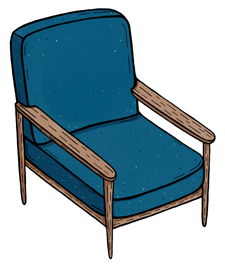/cdn.vox-cdn.com/uploads/chorus_image/image/60077183/ThroughBedroom139831.2_Casey_Dunn.0.jpg)
Interior designer Andee Hess, founder of the Portland-based Osmose Design, has been referred to in the press to "enigmatic" and "hard to pin down." Looking at her portfolio, it’s easy to see why: Her work embodies a wide range of styles and aesthetics, from the transportive drama of a neighborhood Italian restaurant to the sleek minimalist kitchen in a downtown loft.
Every Osmose project is tailored to the individuals Hess works with, ultimately making her approach to design one of exploration. "Rather than coming in with a set of ideas, it’s really important for me to have a clean slate in my mind," says Hess. "This way I’m open to a [project] developing into something that is new and unique for that client or brand."
Hess recently spoke with Curbed about her process, so that we could better understand the more abstract aspects of interior design.
Design as psychology
"I really like people," says Hess. "There’s a lot of different layers of working with a client and there’s a lot of psychology involved. It’s important to me that I design a space that really represents them."
To understand what her clients want and need, Hess asks lots of questions and encourages clients to think big about "the ideal way [they] want to live," and not get mired in the constraints of the existing space. "It’s a fun exercise," says Hess. "And it exposes potential that maybe you wouldn’t have been open to otherwise."
Hess also wants to know what motivates their choices about the space. "How and why are we making the decisions that we’re making?" she asks. "This is a really important phase when you’re trying to avoid trends. Do you like it because you’ve seen it a lot? Do you like it because it evokes a feeling or a mood? Do you like it because you think it makes you look cool?"

Create a visual language
Throughout the early stages of the process, Hess’s goal is to produce an "imagery deck," which will help her better understand a client’s likes and dislikes and shape the overall design concept.
"If you say, ‘I love cozy and I hate modern,’ that’s creating images in your head and those images will be different for everyone," she says. She pulls photos that will form a "common language" and a basis for all future communication. This helps her have a comprehensive understanding of how the things a client is drawn to should be represented visually.
Curiosity is key
"What I really love about design is the discovery process," says Hess. Learning about her clients, their lives, and their likes and dislikes "is a lot of fun." Hess approaches every project with a healthy dose of curiosity, whether that’s to better understand clients’ preferences or to explore new materials or furniture.

On a recent residential project, she commissioned stained glass panel installations and learned about the process of making stained glass. "It’s always about being able to explore new things," she says.
Materials as mood-setters
Hess likes to get materials involved early on by creating a mood palette of materials that evokes the "tactile" and "concrete" aspects of the design concept. Giving clients the opportunity to see and feel actual materials is important so they can "imagine how it will interact with other things in the space and build that personalized aesthetic."
Sometimes Hess likes to come into a project having identified a material that she thinks is ripe for exploration. She and a client might look at a stone that’s typically used in counter fabrication and brainstorm other ways it could be used. "Who knows, maybe we can do some custom furniture with it?"

Lighting sets the tone
"If your space is not lit properly, all of the work that you put into it is wasted," says Hess. She uses lighting to create tone and underscore the space’s mood and aesthetic.
"Sometimes we’re looking at a modern crisp space and we want to reinforce the architecture of the space, so we might incorporate hidden, linear light sources," she says. "Sometimes you want to use lamps and decorative fixtures with a warm glow. It really depends on the mood that you’re creating."

Furnishings bring personality
To get the right mix of furniture and decor for clients, Hess casts a wide net, showing clients a "high-low eclectic mixture" from which they can choose. "Those decisions come out of that initial process of [developing the] concept," says Hess. "You want to make sure that it’s something that represents you, your personal style, and likes." Collecting a mix is what keeps a space from looking too much like a catalog.

Loading comments...